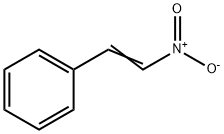(2-Bromoethyl)benzene , 98% , 103-63-9
Synonym(s):
(2-Bromoethyl)benzene;2-Phenylethyl bromide
CAS NO.:103-63-9
Empirical Formula: C8H9Br
Molecular Weight: 185.06
MDL number: MFCD00000240
EINECS: 203-130-8
| Pack Size | Price | Stock | Quantity |
| 25G | RMB33.60 | In Stock |
|
| 100G | RMB47.20 | In Stock |
|
| 500G | RMB157.60 | In Stock |
|
| 2.5KG | RMB630.40 | In Stock |
|
| others | Enquire |
PRODUCT Properties
| Melting point: | -56 °C |
| Boiling point: | 220-221 °C(lit.) |
| Density | 1.355 g/mL at 25 °C(lit.) |
| refractive index | n |
| Flash point: | 193 °F |
| storage temp. | 2-8°C |
| solubility | 0.039g/l |
| form | Liquid |
| color | Clear colorless to pale yellow |
| Water Solubility | INSOLUBLE |
| BRN | 507487 |
| Stability: | Stable. Incompatible with strong oxidizing agents. |
| InChIKey | WMPPDTMATNBGJN-UHFFFAOYSA-N |
| CAS DataBase Reference | 103-63-9(CAS DataBase Reference) |
| NIST Chemistry Reference | 1-Bromo-2-phenylethane(103-63-9) |
| EPA Substance Registry System | Benzene, (2-bromoethyl)- (103-63-9) |
Description and Uses
Phenethylbromide is an analytical reference material that is structurally categorized as an organobromide. It is used in the synthesis of a variety of compounds, including fentanyl. Phenethylbromide is combined with 4-piperidinone to produce N-phenethyl-4-piperidone, which, as a precursor in the synthesis of fentanyl, is scheduled as a List I chemical in the United States. Phenethylbromide may be found as in impurity in samples of fentanyl produced using this pathway.
(2-Bromoethyl)benzene is used in the preparation of phenelzine by reacting with hydrazine. It is also used as a starting material to prepare various beta-phenethyl derivatives, active pharmaceutical ingredients, and fragrances. It finds application as a flame retardant.
Safety
| Symbol(GHS) |  GHS07 |
| Signal word | Warning |
| Hazard statements | H302-H319 |
| Precautionary statements | P301+P312+P330-P305+P351+P338 |
| Hazard Codes | Xn |
| Risk Statements | 22-36-36/37/38 |
| Safety Statements | 26-37/39-39 |
| RIDADR | UN 1993 / PGIII |
| WGK Germany | 3 |
| RTECS | CY9032000 |
| TSCA | Yes |
| HS Code | 29036990 |
| Hazardous Substances Data | 103-63-9(Hazardous Substances Data) |





